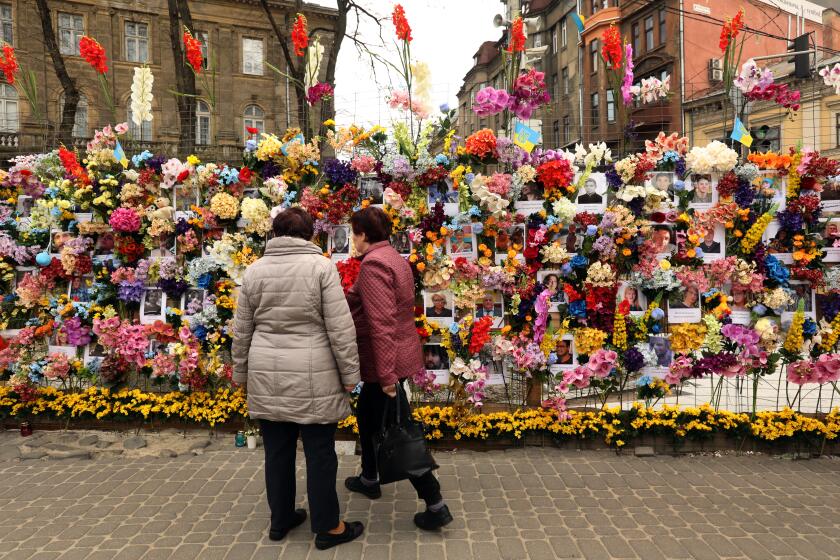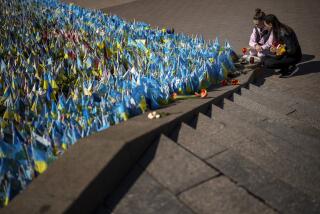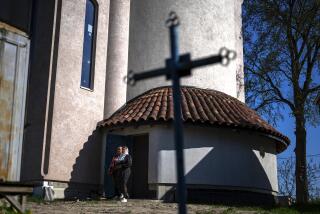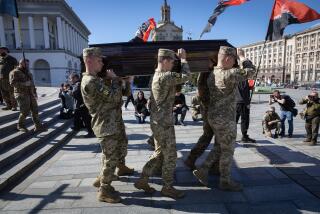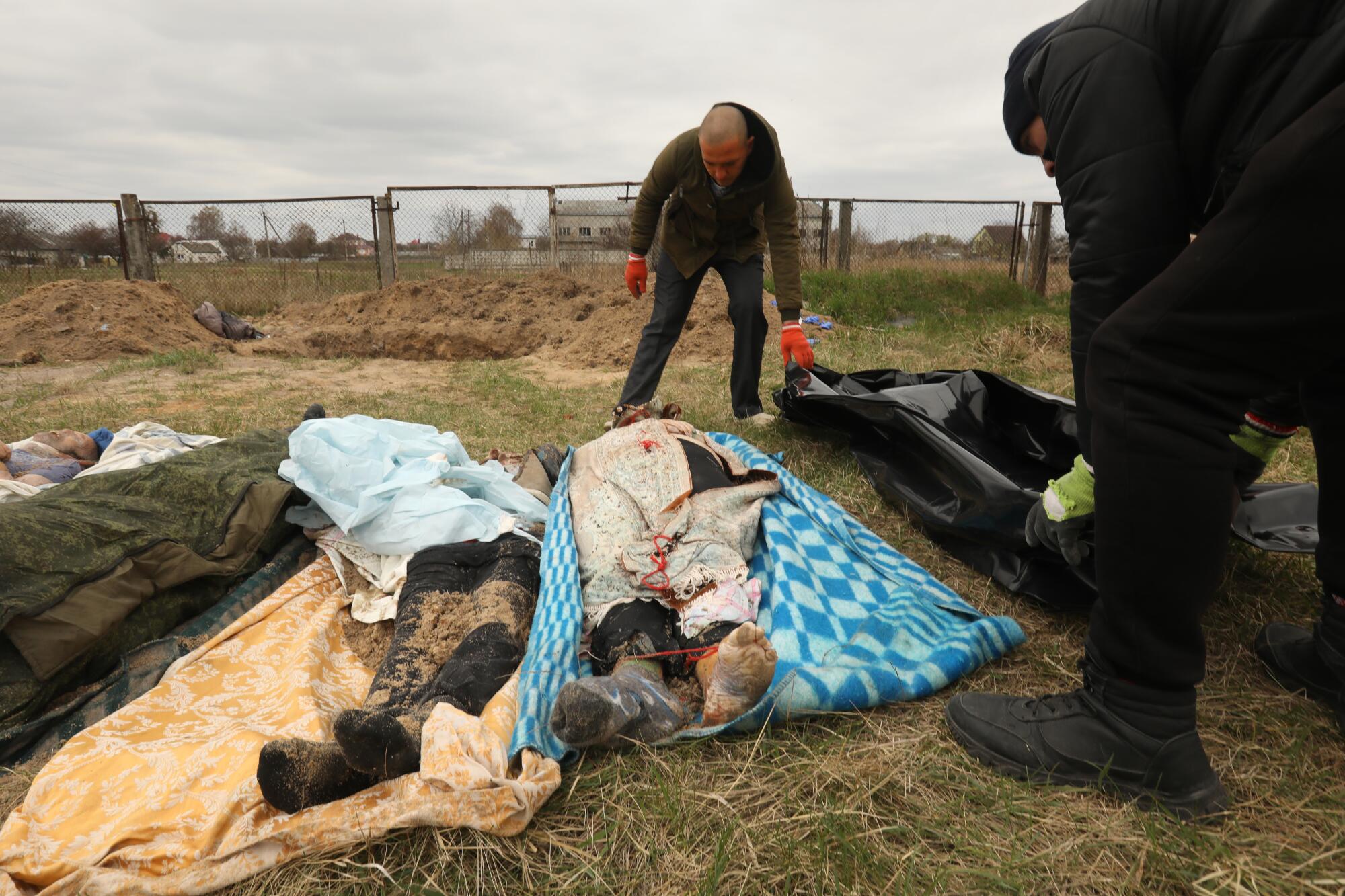
- Share via
BUCHA, Ukraine — The dead are so many. And they are everywhere.
A son found lying with his hands folded beneath his cheek, as if sleeping. People run over by Russian armored vehicles, their mangled remains pulled from a mass grave. A woman’s corpse covered only by a thin nightgown that offered no scrim of dignity.
In the brutal landscape of what were once placid and prosperous suburbs and satellite towns near the Ukrainian capital, Kyiv, investigators struggle daily to document evidence of mass atrocities against the people who once lived here.
Because the dead, in their way, can speak.
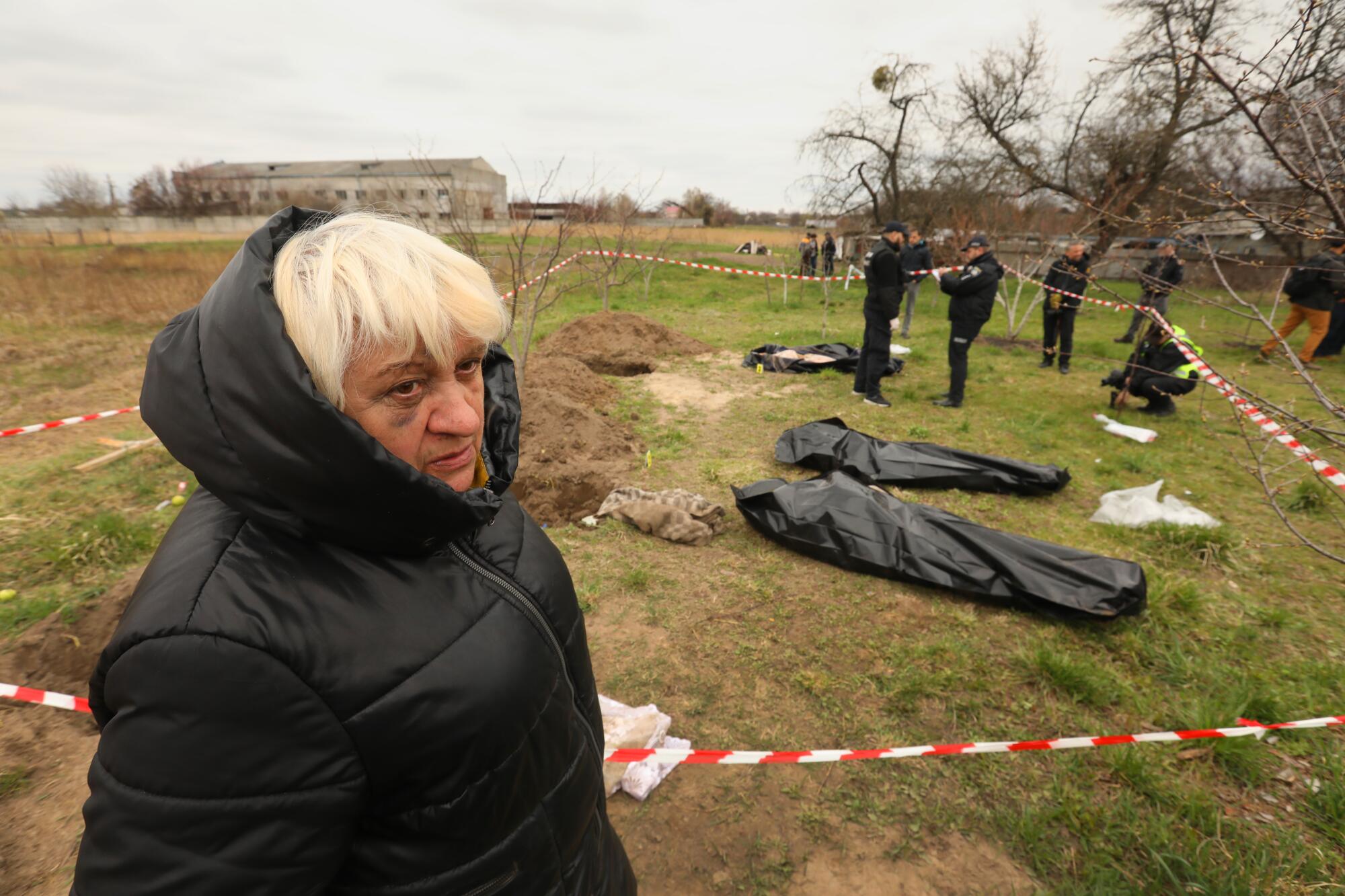
They work painstakingly, these caretakers and curators, these examiners and searchers who are affording the most meticulous care to this scatter of carnage, for the sake of the knowledge to bring the perpetrators to justice — perhaps.
And painstakingly, also, in the sense that they — along with the stunned mourners they minister to, as best they can — are absorbing the horror of what transpired here, along roadsides, in cellars, and in the mud of gardens and backyards.
The Russians have been gone for nearly as long as they occupied these small Ukrainian communities, living among those whose lives they would take or change forever. Over the weeks, it became clearer that the Russian military advance would stall here, that the invaders’ imagined swift and triumphal push into the capital would be derailed in a tangle of logistical and other problems.
For that ignominious failure, and the backlash it ignited, civilians paid the price. Hundreds died here, Ukrainian officials say, and an outraged world is demanding war crimes investigations and eventual accountability.
That’s for later. For now, a sorrowful procession arrives daily at the morgue in Bucha, a town whose name has become a byword for hideous suffering coming to light weeks after the fact. The crowd is small and desolate, waiting for the bodies of loved ones to be formally identified and released as the exactitude of forensic science folds into simple grief.
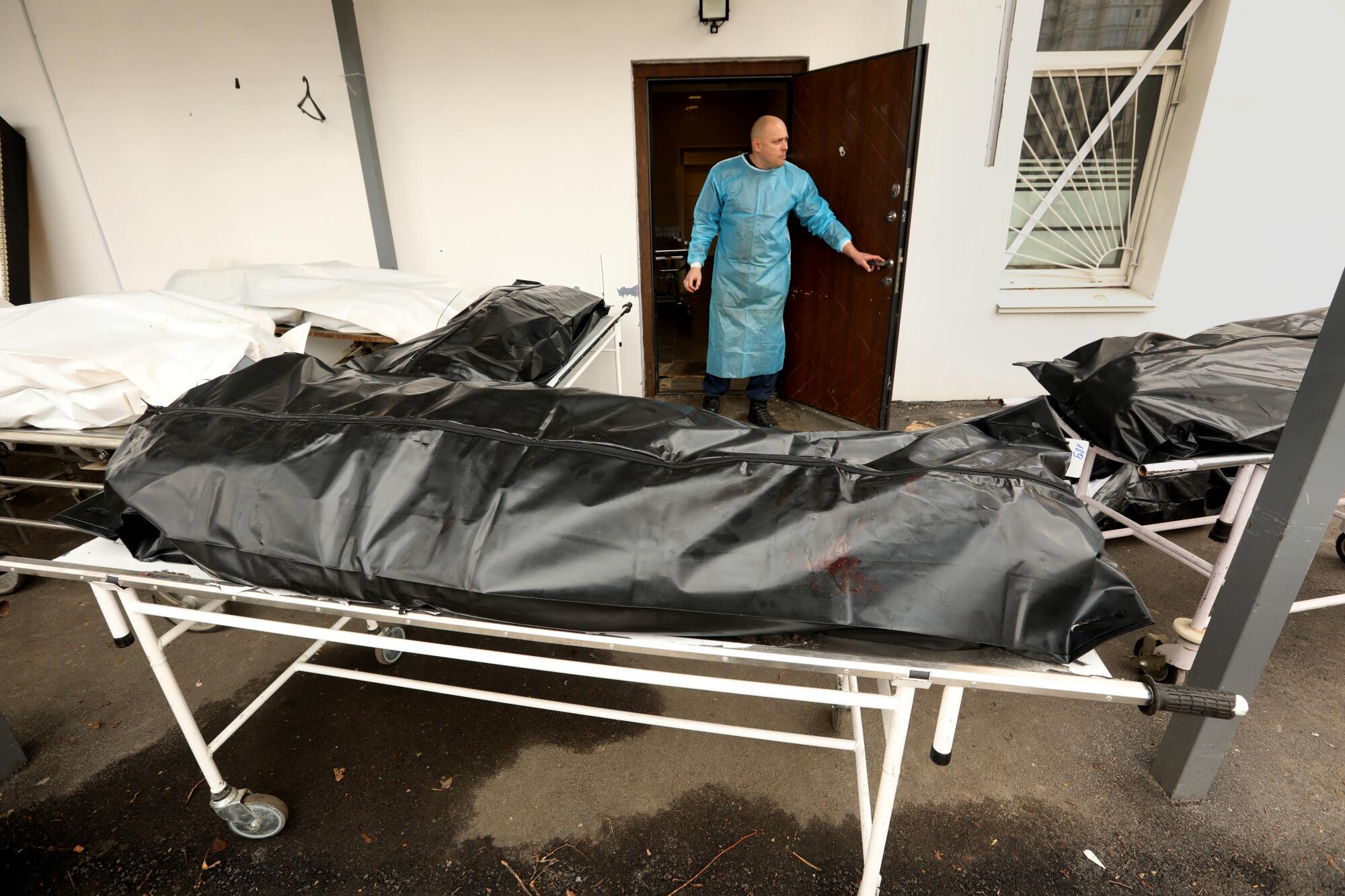
Out front, a dozen gurneys bore numbered plastic body bags. Some of the remains had been exhumed days before from the mass grave at the church of St. George, a few blocks away. More than 50 bodies were recovered there.
Now, the ragged trench has been filled in with dirt. A bloodied comforter still lay on the ground.
At the morgue, Zena Laboonska leaned over the body bag holding her 31-year-old son, Sergey Sydorchuk, bearing a tag with the number 184. With both hands, she touched the white plastic covering.
Nearby, a man named Sergey Bauepa was waiting to collect the remains of his son Nicolai, dead at 37. Even after an interval of weeks, the father had the air of a person trying to process something beyond his capacity to wonder.
“They killed him,” he said.
Up the road in the heavily damaged town of Borodyanka, black-clad Ukrainian police investigators went about their bleak task: taking pictures and measurements of a dug-up grave containing six bodies.
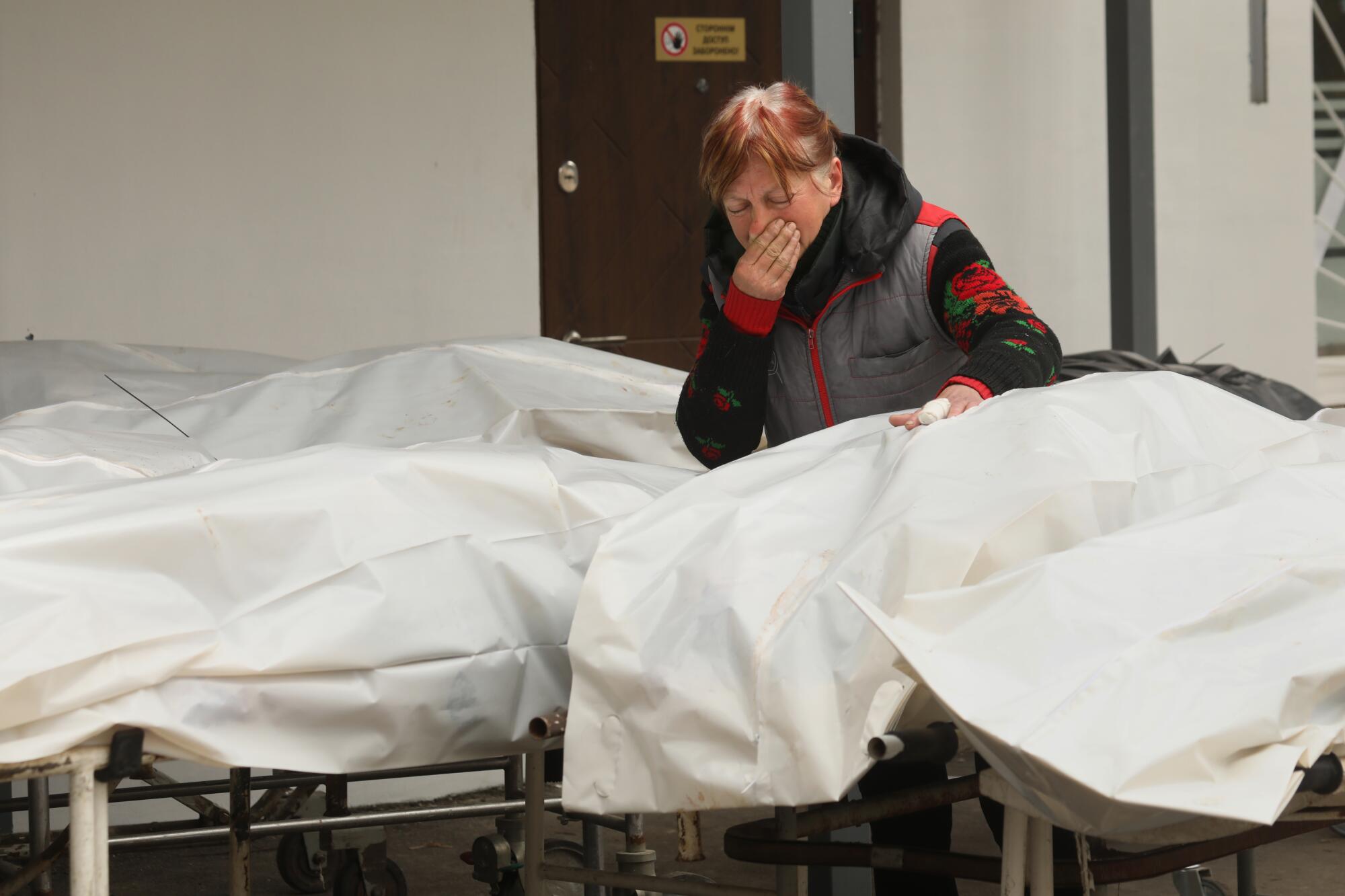
Alexander Salov, 39, already knew the fate of his 64-year-old father, Sergey: body mainly intact, head crushed. He had stood in front of a Russian armored vehicle, trying to stop it, witnesses said. It ran him over.
Another of the six bodies in the grave also had been run over by heavy vehicles, while four other corpses, at least one of them a woman, bore the marks of gunshot wounds.
Photojournalist Carolyn Cole documents Ukrainian life amid Russia’s invasion.
A few yards away, police tape marked off an area where three other bodies, two male and one female, were uncovered by police investigators. Nadya Boyko had buried her son there after he was shot and killed by Russian troops on Feb. 28.
Now, after the investigators finished their work, she would return him to the earth a second time.
The body of a woman exhumed was covered only by a thin nightgown, suggestive of other horrors. Along with cataloging the many signs of execution-style killings, war-crimes investigators are documenting evidence of sexual atrocities committed by the occupying forces.
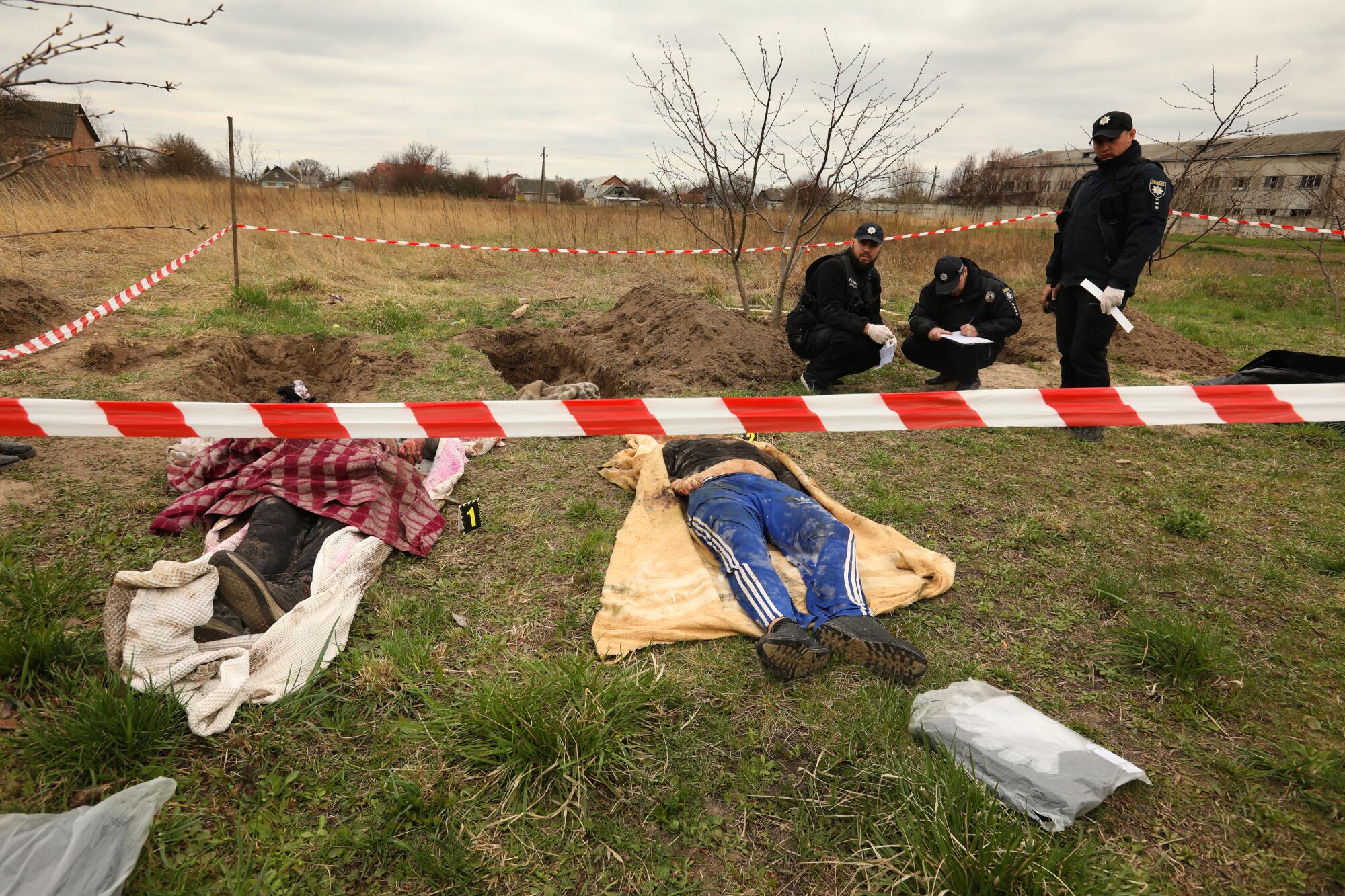
Near the town of Andriivka, about 50 miles north of Kyiv, Nadya Savran knew something was wrong when her son Igor, a car mechanic, didn’t come home on March 19. The Russians had occupied their village since Feb. 26, two days after the invasion began.
She feared the worst. But even after the Russians retreated on March 30, the 66-year-old mother was told it was too dangerous to look for him. The area was laced with mines.
Finally, as if in an eerie game of hide-and-seek, townspeople inspected two underground bunkers the Russians had created by burying a car and truck. Nearby, in a white building with wooden doors, she found her 46-year-old son’s body lying on his side, shot twice in the chest.
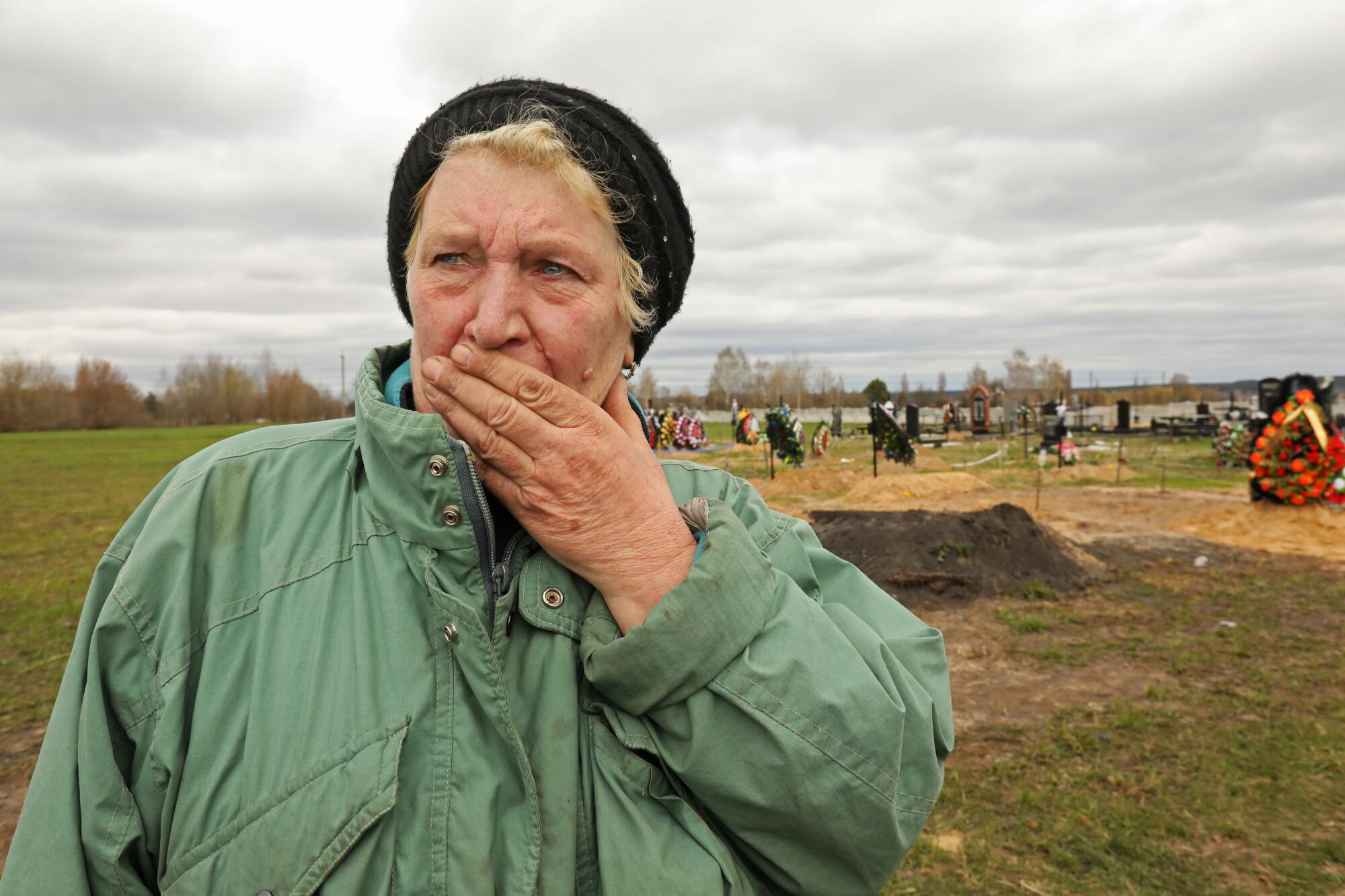
Recounting the moment, she mimed a posture of sleep — slumber, as that of a child.
Now there are a dozen freshly dug graves in the town’s graveyard, newly cleared of mines. Igor and his boyhood friend Vladimir Pozharnikov, who went missing at the same time, are buried side by side.
Atop their graves are yellow flowers and pieces of candy. A butter cookie.
Savran and her son had talked about the Russian presence, but didn’t fully grasp how war so quickly encroaches. When he was out of the house, she didn’t hide in the basement; she stayed in the living room, with her cat for company.
She remembers something he said to her during those days, as if the very idea that someone would attack him for no reason was unfathomable.
“Why,” he asked, “should I have to die?”
No answer came. Perhaps one never would.
Cole reported from Bucha and King from Berlin.
More to Read
Sign up for Essential California
The most important California stories and recommendations in your inbox every morning.
You may occasionally receive promotional content from the Los Angeles Times.
